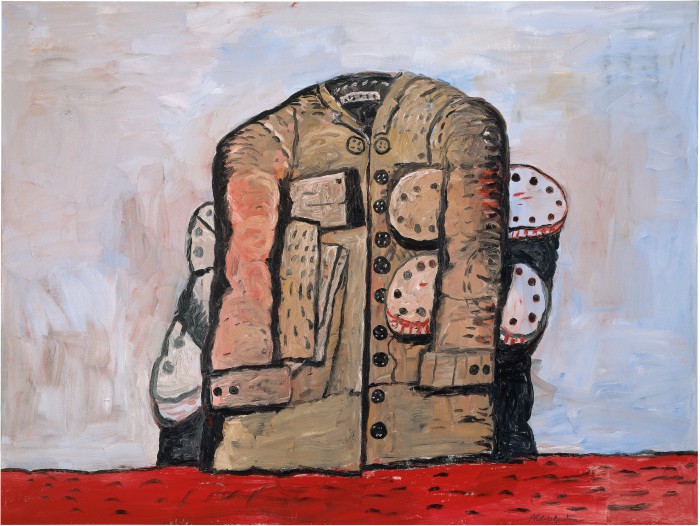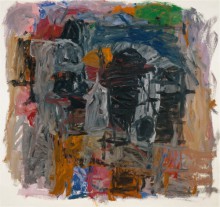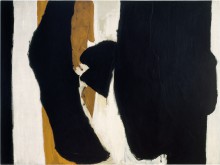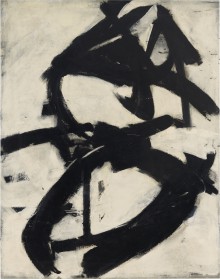Philip Guston
The Coat II 1977

©The Estate of Philip Guston, courtesy McKee Gallery, New York. Reproduction of this image, including downloading, is prohibited.
The Coat II is a key work in the Anderson collection. Philip Guston is a unique member of New York School who, unlike the abstract expressionists, abandoned non-representational action painting in favor of his signature whimsical, cartoonish style. The Coat II is perhaps a bodiless and headless self-portrait. The language of Guston—worn out soles of shoes, fleshy pinks, and metallic greys—are at play in this work. This painting is part of a 1977 series “coat” paintings, and a later set of coat lithographs on the same subject.
By the 1950s, Guston had established himself in New York as an “Abstract Impressionist” for the delicacy with which he built up a painted surface. In 1970, following a brief hiatus from painting, Guston returned to the art world with a cartoonish, figurative style that shocked critics. He developed a personal iconography of forms, combining autobiography with references to unsettling events in history. In The Coat II, an overcoat stands stiffly against a blood-red ground, clutching a pair of shoes, some empty canvases, and pages of text. The painting recalls the central image of the Russian realist Nikolai Gogol’s short story “The Overcoat” (1842), in which a man is the butt of his contem- poraries’ jokes.
After visiting Guston’s studio in 1978 and selecting The Coat II for their collection, the Andersons developed a close relationship with the artist and his wife, Musa. With the encouragement of the artist’s primary dealer, David McKee, they championed his work when others denigrated it, recognizing early on the significance of his late style.
-Sidney Simon, PhD ‘18
Friendships in the New York School
Despite his friendships with the Abstract Expressionists, Guston never really left figuration. After experimenting for decades, he made his way into the New York art scene in 1970 with cartoonish, exaggerated figures, bringing his signature style into the highly abstract realm of the New York School and melding all of his influences—including those from outside of the art world. The Coat II is part of a series in which Guston painted overcoats, having been influenced by Nikolai Gogol’s 1842 short story, “The Overcoat.” In Gogol’s tale, the man with the overcoat is the punchline to his friend’s jokes, evoking a humorous but dark relationship between the story and Guston’s own experience. Through its enigmatic composition and layered symbolism, the painting invites viewers to contemplate the complexities of human existence.
Guston’s exploration of form and content demonstrates the profound influence of his friendships. His bold, dynamic brushwork and sense of raw energy recall the visceral expression of Franz Kline’s Figure 8, while Willem de Kooning’s unorthodox approach to figuration informed that of Guston. Jackson Pollock’s revolutionary drip painting technique encouraged Guston to experiment with a liberated approach to artistic expression.
—Irmak Ersoz ‘24







